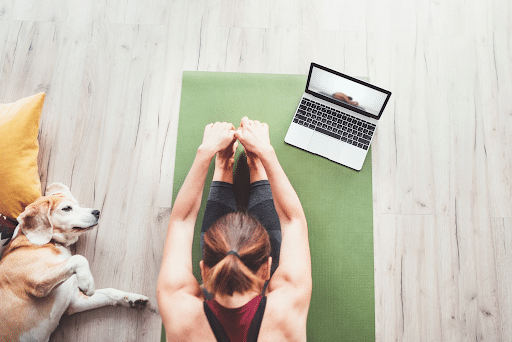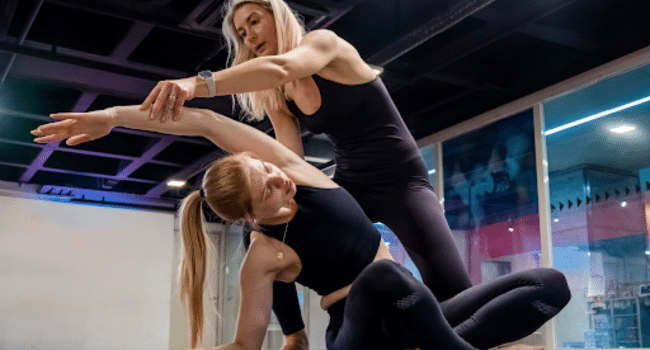Table of Contents
Becoming a Pilates instructor involves structured learning, practical teaching experience, and a steady commitment to professional development. Attending classes or memorising exercises is only one part of the process.
For those aiming to enter this profession with clarity and purpose, the following steps outline a clear and achievable route. This structured pathway supports individuals from various backgrounds, whether they aim to teach professionally, deepen personal practice, or supplement existing careers in movement or therapy.
1. Choose a Training Programme That Matches Your Needs
Selecting the right training course is an early but defining step. Some centre on classical Pilates, while others integrate contemporary Pilates theory and updated movement science. Reputable institutions such as The Pilates League and other professional training organisations provide structured coursework that includes face-to-face instruction and assessment, which can be useful for practical learning and direct feedback.
2. Study the Core Concepts Behind Human Movement
To guide others in movement, a foundational understanding of the body is required. Training begins with modules covering functional anatomy, muscle attachments, energy and metabolic systems, and biomechanics.
For example, recognising how the pelvis aligns during spinal articulation can help instructors modify exercises for clients with lower back discomfort or limited range of motion. Trainers need to recognise how different joints function, where mobility is limited, and how to cue alignment using precise terminology.
3. Engage in Supervised Practice and Teaching Hours
Theory alone won’t prepare anyone for live teaching. Most programmes include hundreds of hours allocated to observation, teaching practice, and self-mastery. They form the applied side of the learning process.
Keeping practice logs helps track improvement and identify areas needing revision. Whether shadowing one-on-one sessions or instructing small groups, every minute contributes to long-term teaching readiness. These teaching hours also provide the foundation for preparing confidently for practical assessments later in the programme.
4. Learn to Teach Using Established Movement Principles
Good teaching involves understanding movement principles, cueing techniques, and timing. Training often includes how to structure sessions around flexibility, strength, breath, and alignment. Cueing language should match the movement being taught: short, actionable, and easy to adapt. It’s also common to study session management, transitions, and how to keep attention on safety without over-explaining.
5. Understand Pilates Equipment and Its Use
Working with Pilates equipment is central to many certifications. Trainees learn how to use Reformers, Cadillacs, and other tools safely and effectively. Familiarity with springs, straps, and moving parts is necessary to adjust resistance levels or create variations suited to different bodies. Each piece of equipment serves a purpose. It can add variety, improve stability, or assist individuals recovering from injury.
6. Pass a Practical and Written Exam
Most instructor programmes conclude with a certification exam. This typically involves both a written theory paper and a practical demonstration of teaching. Passing requires clarity in cueing, correct use of terminology, and the ability to adjust exercises based on what a client presents. The certification reflects competence in both theoretical understanding and teaching execution.
7. Develop Additional Competencies for Long-Term Success
Becoming a Pilates instructor isn’t limited to movement education. Many roles today also involve learning about business skills, user experience, and website functionality, particularly for instructors who plan to work independently or offer online sessions. Understanding how to manage online bookings, respond promptly to enquiries, and streamline digital communication contributes to a smooth client relationship and supports long-term engagement.

8. Commit to Ongoing Learning and Formal Credits
Certification isn’t the endpoint. To stay informed and confident in delivering sessions, many fitness professionals pursue continuing education credits. These might cover updates in exercise science, refinements in cueing strategies, or research-backed approaches to spinal health. Remaining active in professional development protects against outdated knowledge and helps instructors maintain a high standard across their work.
Final Notes
For those coming from adjacent disciplines, such as personal trainer roles or dance backgrounds, the transition may feel familiar but still requires formal preparation. Programmes designed for Pilates instruction are built to support beginners and seasoned movement educators alike. Joseph Pilates called his method Contrology, and it remains a form of exercise grounded in attention, strength, and alignment.
Always keep in mind that different learners will come in with different goals. While some may be motivated to teach, others might want deeper knowledge for their own practice. A clear training path accommodates both.
This guide provides a starting point for anyone interested in becoming a certified instructor. With the right foundation, instructors are equipped to teach confidently, adjust for individual needs, and support movement that is both safe and effective.
